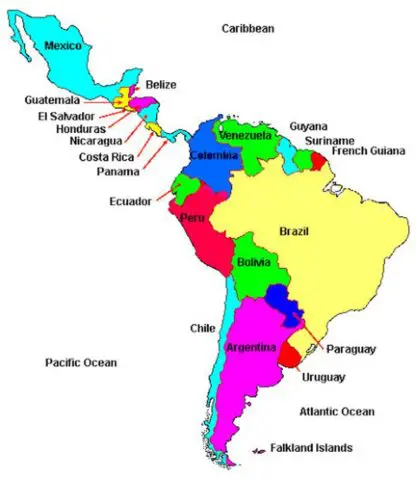Living in South America and Central America may seem similar at first glance, given their geographical proximity and shared cultural heritage. However, these two regions have distinct differences that set them apart. From their landscapes and climate to their languages and cultures, South America and Central America offer unique experiences for those who choose to call them home.
Size and political organization
One of the most evident differences between South America and Central America is their size and political organization. South America is the fourth largest continent in the world and is comprised of twelve countries, including Brazil, Argentina, and Colombia. In contrast, Central America is much smaller and consists of seven countries, including Belize, Costa Rica, and Guatemala. The smaller size of Central America allows for easier travel between countries, whereas South America’s vastness requires more time and planning.
Landscapes and climates
Another significant difference lies in their landscapes and climates. South America boasts a diverse range of environments, from the Amazon rainforest in Brazil to the Andes mountains in Peru. Central America, on the other hand, is known for its pristine beaches, lush rainforests, and active volcanoes. The tropical climate prevalent in both regions offers warm temperatures year-round, but South America experiences more extreme variations due to its size and diverse geography.

Language
Language is another distinguishing factor. While Spanish is the dominant language in both regions, South America is home to a wider variety of languages, including Portuguese in Brazil, Quechua in Peru, and Guaraní in Paraguay. In Central America, Spanish is the official language in all countries, except Belize, where English is widely spoken. The linguistic diversity in South America reflects its rich indigenous heritage and cultural tapestry.
Culture
Cultural differences also set South America and Central America apart. South America is renowned for its vibrant music and dance traditions, such as the tango in Argentina and samba in Brazil. The region’s strong indigenous influence is evident in its traditional arts and crafts, festivals, and cuisine. In contrast, Central America’s cultural identity is shaped by a fusion of indigenous, European, and African influences. The Garifuna culture in Belize and the Mayan ruins in Guatemala are prime examples of Central America’s diverse cultural heritage.
Economy
Economically, South America and Central America exhibit disparities as well. South America has a more developed economy, fueled by industries such as agriculture, mining, and manufacturing. The region is rich in natural resources, making it an important player in the global market. Central America, on the other hand, relies heavily on agriculture, tourism, and remittances from migrants working abroad. The economies of both regions face their unique challenges and opportunities.
While South America and Central America share some similarities, they have distinct differences that make each region unique. From their landscapes and climates to their languages and cultures, these two regions offer diverse experiences for those who choose to live there. Whether it’s exploring the ancient ruins of Machu Picchu in Peru or relaxing on the pristine beaches of Costa Rica, South America and Central America have much to offer to residents and visitors alike.

For those who have experienced shifts in consciousness and know that more peace, joy, and love awaits in a better living environment. A bold shared vision. A living community and hub for innovation. A sustainable ecosystem for living and working. A model for the new future.
